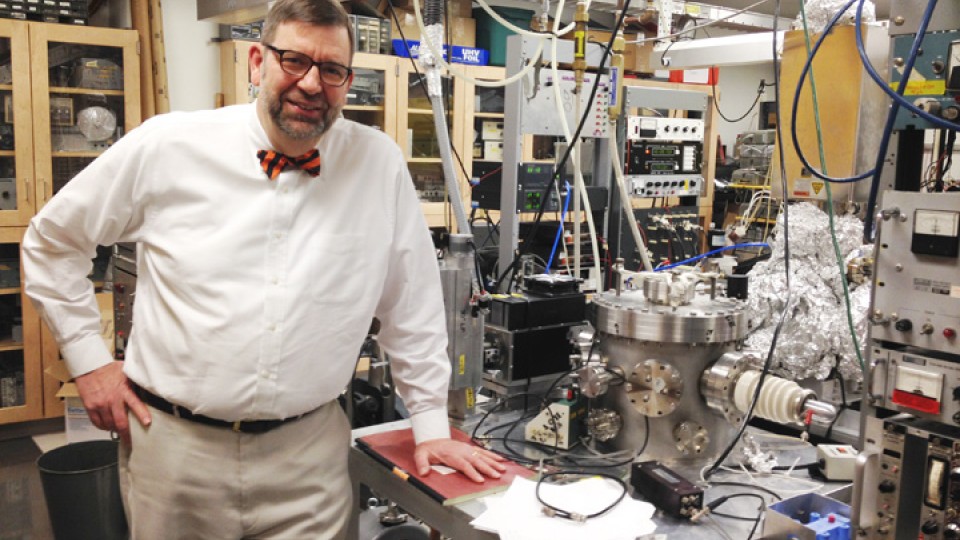· 2 min read
Findings lend insight into electron-molecule collisions

A new study co-authored by a UNL physicist has uncovered some of the basic building blocks for understanding collisions between electrons and molecules.
Tim Gay, professor of physics and astronomy, worked with former UNL graduate student Jack Maseberg to use a polarized electron-molecular scattering apparatus to find out how molecules are affected when struck with electrons having a constant spin direction. Their results were published Dec. 17 in Physical Review Letters, one of the most prestigious journals in the field of physics.
The findings are the first to document with specificity that electrons, which have an inherent rotation, can transfer that rotation to the molecules they strike. These collisions are responsible for much of the workings of astrophysical plasmas such as those in the sun as well as upper-atmospheric chemistry, which supports climate change modeling. The findings could even influence how fluorescent lights are made.
“We now understand better how electrons scatter from molecules,” Gay said of the results, which show how angular momentum is transferred. “That teaches us a lot about how electrons whack molecules, which is important in any number of processes.”
Now that they know exactly what happens when these collisions occur, theorists also can refine their calculations, Gay said.
“That sense of rotation is a fundamental quantity in these collisional processes and we’ve done the first careful job of quantifying it for an electron scattering from any molecule,” Gay said.
Because Gay and Maseberg manipulated the energy of the electrons they used, the study also determined what shape the molecules take after being struck at extremely low energies. In this state, atoms are shaped like a cigar, while molecules look like pancakes. This determined that molecules react in fundamentally different ways than atoms.
“These are fine details, but it turns out this is the kind of information – whether the thing is rotating and what shape that rotation takes on – are important quantities to know,” Gay said.
Co-author Klaus Bartschat of Drake University worked with Gay and Maseberg in analyzing the data. Maseberg, who received his doctorate from UNL in 2009 and is the study’s lead author, is an assistant professor of physics at Fort Hays State University.







